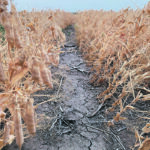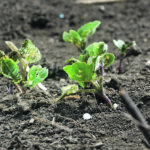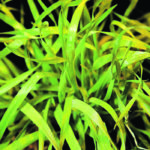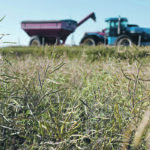
Stories by Robin Booker

Aphanomyces levels in Alberta pea and lentil crops plummeted last year because of the drought, but growers still need to be careful planting peas and lentils in fields with a history of the disease. Robyne Bowness Davidson, pulse specialist at Lakeland College, said the only way to know how last year’s drought affected aphanomyces levels […] Read more

Growers urged to go slow with lupin production
The pulse crop has significant potential, but researchers are still attempting to solve significant agronomic challenges
Lupin is a promising crop that will likely get a foothold on the Canadian Prairies, but more research is needed into the pulse before this can happen. “I just want to caution the industry right now to not move too quickly. There’s so much demand and so many questions about lupin seed, and I just […] Read more
Drought leaves nutrients high and dry
Crops took some, soil took some and weather took some, but the true measure of what remains is challenging to assess
High levels of residual nutrients might be available in many prairie fields going into the 2022 growing season because of the drought last summer. Fertilizer expert Rigas Karamanos said inadequate water last summer caused reduced nutrient uptake of applied fertilizer by crops over wide swaths of the prairie provinces. “There is tremendous amount of residual […] Read more
Sask. winter cereal group votes to join wheat commission
Sask. Winter Cereals Development Commission faces significant challenges, including cyclic pattern of winter crop acres
The Saskatchewan Winter Cereals Development Commission plans to amalgamate with the Saskatchewan Wheat Development Commission. During the SWCDC’s annual general meeting held virtually during the Western Canadian Crop Production Show, voting members unanimously passed a motion that called for Sask Wheat to assume SWCDC’s mandate. Brad White of Gull Lake is the vice-chair of SWCDC […] Read more
One, clear winner in clubroot resistant canola
Researchers found some varieties did well at 10 to 20 percent disease, however some of the genetics performed poorly
In a survey of canola varieties with second-generation clubroot resistance, researchers found most of these cultivars developed moderate to high disease severity in response to at least some of the resistance-breaking clubroot pathogens they collected. However, one of the canola varieties tested was resistant to just about all common clubroot pathotypes on the Prairies. Last […] Read more
Glyphosate-resistant grass found on Alberta farmland
Glyphosate-resistant downy brome has been found in Alberta. “This is actually a pretty significant discovery because it’s the first glyphosate-resistant grass weed confirmation in all of Canada,” said Charles Geddes, Agriculture Canada weed scientist in Lethbridge. Geddes provided an update on weeds and herbicide resistance during the Alberta Agronomy Update on Jan. 12, where he […] Read more

Sask. winter cereal group votes to join wheat commission
The Saskatchewan Winter Cereals Development Commission plans to amalgamate with the Saskatchewan Wheat Development Commission, or Sask. Wheat. During the SWCDC’s annual general meeting held virtually during the Western Canadian Crop Production Show, voting members unanimously passed a motion that called for Sask. Wheat to assume SWCDC’s mandate. Brad White of Gull Lake is the […] Read more

Recon system keeps close watch on spray quality
Malfunctioning or partially plugged sprayer nozzles can be difficult to detect, costly and embarrassing when they act up beside a busy road. Intelligent Ag recently launched a product called Recon Spray Sense that help alleviate these concerns. “It’s the first time that anybody’s really doing any kind of monitoring right at each individual nozzle,” said […] Read more

Picturing the sound of a bug’s wings
A co-founder of a unique insect sensor that’s placed in agricultural crops recently won an IEEE Data Mining Award. Eamonn Keogh of FarmSense won the award, and he said data mining is typically done in research fields such as neuroscience, astronomy or in areas with readily accessible data sets like consumer trends. “No one had […] Read more

Farmers receive new insurance options
Farmers Edge founded a new company called DigiAg Risk Management that offers parametric products, insurance and group benefits plans. Parametric insurance provides pre-specified payouts based upon a trigger event, and because Farmers Edge has access to data sets from broad-acre farms, the new company is positioned to monitor triggering events in the agriculture sector. Wade […] Read more




